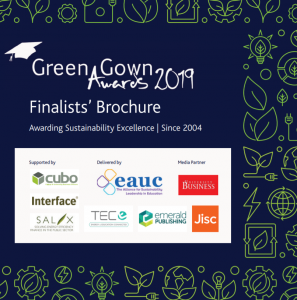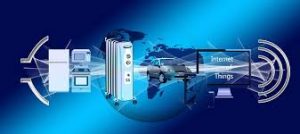
Use Case: Intelligent Meetings
What’s the issue?
Meetings are one of the most complained about aspects of the work environment, however, generally it is acknowledged they are necessary, and that good meetings can be highly productive. Can the Intelligent Campus offer some help with the most negative aspects of meetings?
The problems with meetings
Many of the issues relating to this dissatisfaction with meetings are to do with attendees behaviour and motivation. Examples include:
- Meetings taking too long
- Poor participant engagement
- Information not available during meeting
- Key attendees not available
- No suitable space or venue available
- Poor meeting administration – minute taking, actions recorded, etc.
- Lack of follow up to results and actions
While the Intelligent Campus can not provide solutions to all of these issues it can assist with some.
Provide support and a nudge
Many individuals are not comfortable with the technology that is already available when using a range of data sources to enhance meetings. The Intelligent Campus needs to provide easy to use systems, and better support and training, for individuals who are not confident in their use.
The use of nudge theory to encourage better behaviour is also be a feature of high quality meetings. Examples include:
- Having a large clock in the room
- Providing a phone charging station near the door, away from the meeting table
- Making the meeting attendance voluntary
In “nudging” towards shorter meetings, one simple method is the “stand up” meeting. Meeting spaces need to be designed with higher level (or adjustable) tables along with wall or trolley mounted interactive screens and white boards. Attendees can then move around the room to use these aids to access resources and illustrate their discussion.
An added benefit of this type of meeting is its contribution to attendees health – the benefits of standing up and walking around are clear. “Stand up” meetings, however, should be no longer than 15 minutes or so.
What next?
In future we are likely to see the roll out of greater, and more diverse, data use along with new technology, in meetings. The use of artificial intelligence (AI) and virtual reality (VR) is already becoming more common.

Find a meeting space with data
The poor availability of suitable spaces is often a factor when scheduling meetings. A range of data that is being collected has the potential to help in finding meeting rooms.
Rooms can have recurring bookings that aren’t actually taken up and block their use by others. However, increased monitoring and sensoring, to collect a range of data, helps. Types of data collected includes:
- Audio and video – recording the meeting and who is present
- Temperature changes – simply indicating that people are occupying the room
- Movement and door access – including smart card use
- Equipment and wireless use – individual login records
- Facial recognition – matching attendees to their photograph in HR records
Much of this data can indicate whether a space is actually being used by individuals. if it is found not to be in use, when booked, a request to release the room can be sent to the bookee. Similarly, poor utilisation, with large spaces being under used, is revealed through data collected by room sensors. Suggestions of more suitable alternative rooms can be made.
Data is available to use in real time so a that an unused room can be found for a meeting called at very short notice, even if all available rooms appeared to be booked, since they may not actually be occupied.
If availability is still a problem systems can suggest available spaces that are not designed for meetings, such as teaching rooms, reception and social areas. Other data, such as car park use, predicts that these areas will not be busy.
Also timetabling and historical data can be used to predict that high or low levels of room demand. This helps in smoothing out demand for example, suggesting scheduling a meeting a few hours later, after an event, where demand was very heavy. Other data such as term dates, exam timetables, conferences, open days, etc. affecting demand, can be accessed seamlessly to organise meeting spaces.
Clearly there are always periods during which meeting space demand is high. Are there incentives to move meetings off peak? For example, a coffee machine in the meeting room that is be free to use outside the peak periods. Also bookings slots during busy periods that are very short, may be 30 minutes maximum, while 1 or 2 hours bookings are available outside these peak times.
Translation and accessibility
The Intelligent Campus uses data sources such as HR and personnel records to check on the languages spoken by attendees. If not all meeting attendees speak the same language, instant translation is available through earbuds, but also through real time speech to text translation on screen. This is available for both physical and virtual attendees. Additionally this service is of great benefit to those with hearing impairment.
Virtual Reality
When discussing physical locations, buildings, equipment or objects the use of VR is available to enhance the meeting. Using a VR headset allows a 3D rendering of the data describing an object to be available in the room. All attendees do not need to use headsets. If one attendee wears the headset their view is available on screen for other attendees to receive a tour through or around the object.
Taking care of the administration
Many of the administrative tasks can be fulfilled by technology. As the meeting attendees arrive facial recognition technology, matched with images from staff records, records who is attending as they arrive. Upon recognising them the system logs them into the collaborative tools and resources needed during the meeting. The meeting is recorded (both audio and video) using voice recognition systems. In real time the system transcribes the discussion from speech to text along with who said what. This is instantly displayed on screen. Key phases are recognised to assign to the discussion to the relevant agenda item, also action points are highlighted.
Chatbots (or Smartbots), often using AI, provide a conversational interface (text and audio). Using these to organise meetings is likely to become common(1). Chatbots access a range of data from different sources including:
- Identify a suitable meetings rooms from campus space management systems
- Interrogate attendee data such as calendars to suggest a suitable time/date and collate responses
- Document and data archives to prepare the agenda, previous meeting minutes and papers
- Equipment inventories and schedules to arrange remote access (video conferencing etc.) for attendees at other locations
Over time a Chatbot also learns about more frequent meetings and anticipate future meetings, attendees and agenda items as well as setting up the environment in terms of adjusting temperature, lighting etc.
Finally
The Intelligent Campus provides a variety of meeting spaces, depending upon the meeting timings, requirements and size, along with appropriate technology and resources, to make meetings as efficient and productive as possible. These spaces should provide a pleasant, comfortable environment encouraging collaboration and a collegiate atmosphere to achieve the task at hand. Many of the mundane tasks can be fulfilled through systems organising, recording and following up the meeting.
Useful links (correct April 2019)
(1)Chatbot Magazine discusses the use of AI to enhance meetings. See: https://chatbotsmagazine.com/the-5-levels-of-meeting-ai-b60187e51409
(2) Microsoft have produced a short video providing a view of the future of meetings using some of the technology discussed here. See:
https://developer.microsoft.com/en-us/events/build/content/modern-meetings-demo
(3)Instant translation for meetings is demonstrated by Translate Your World (TWYI) at: https://www.translateyourworld.com/en/business-meetings/









